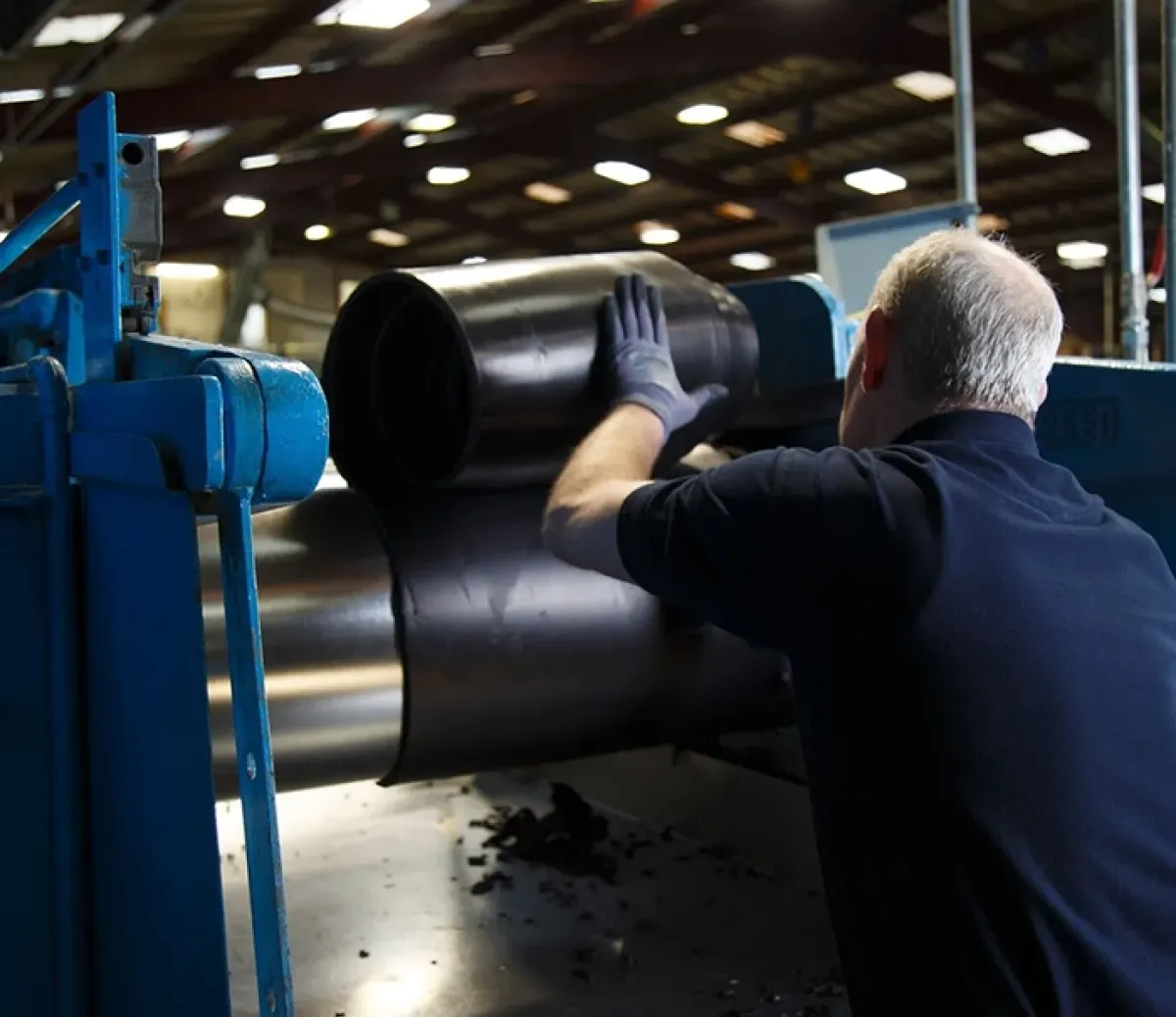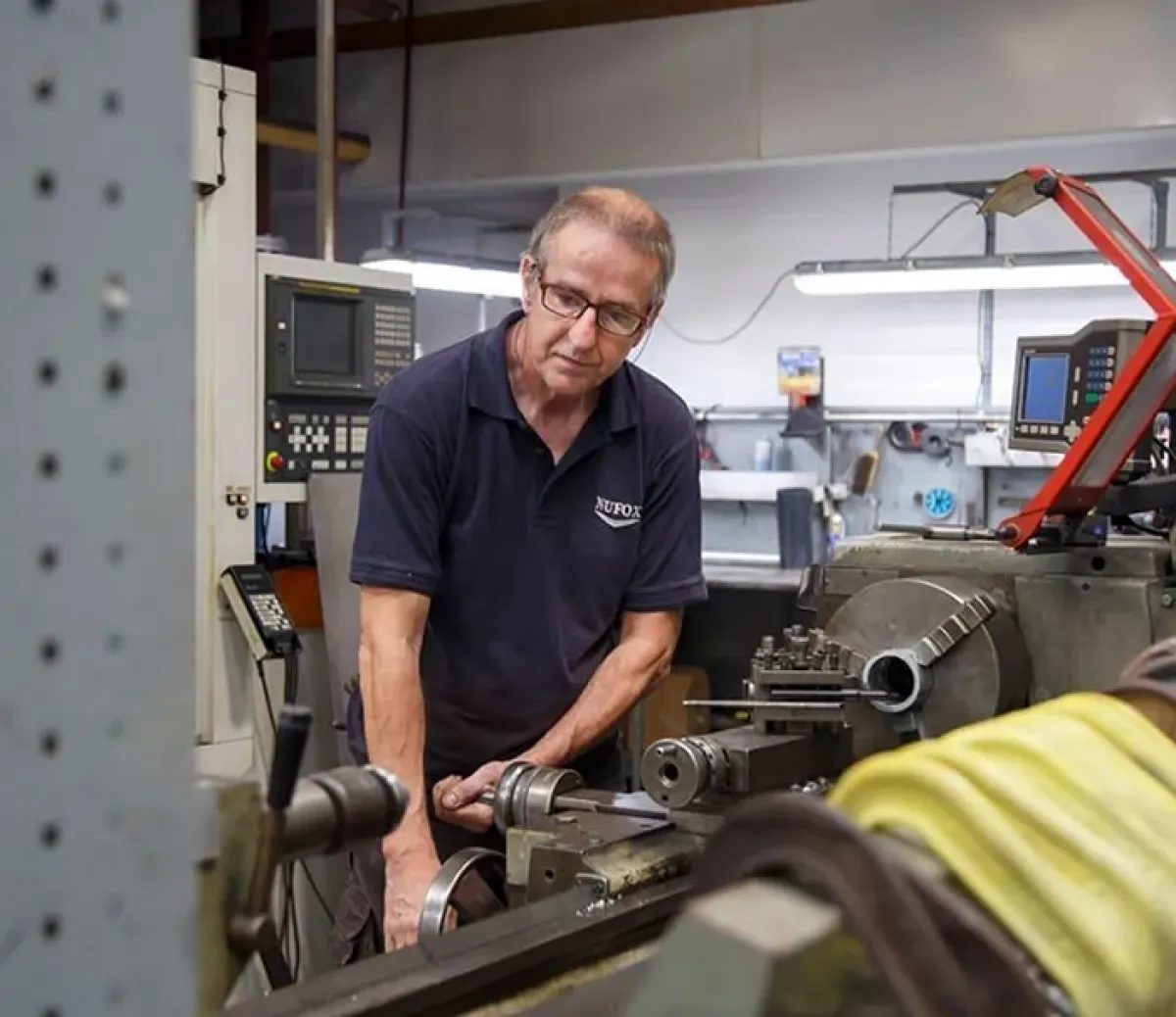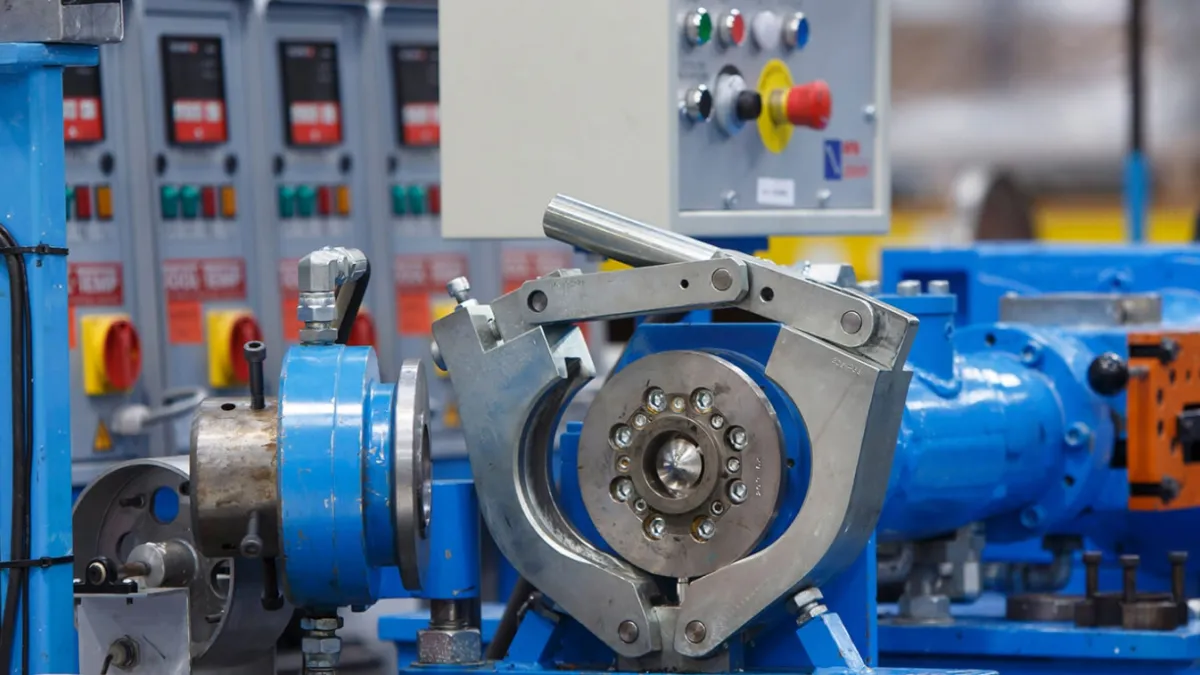By using this website, you agree to our Privacy Policy
×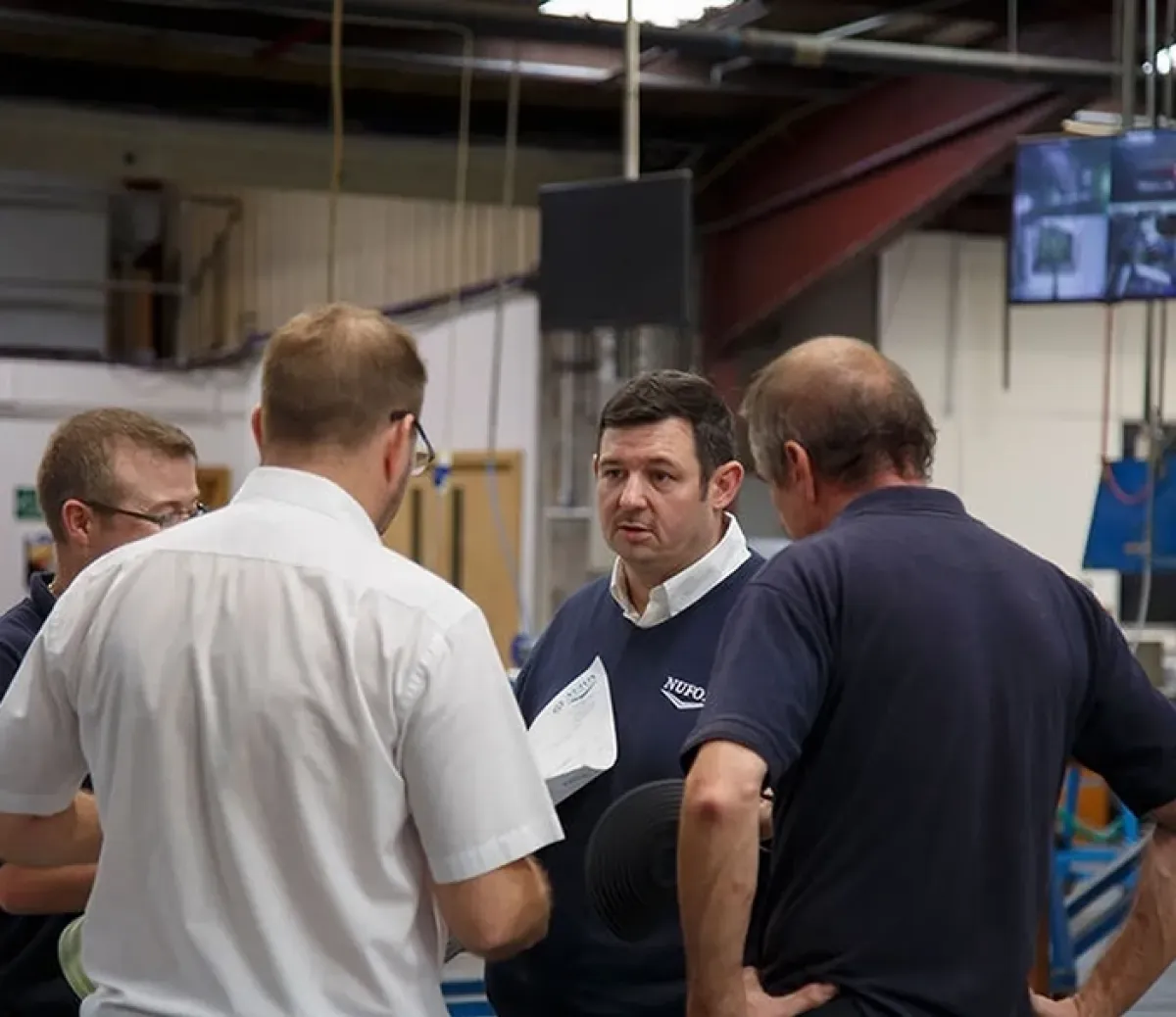
The Role of Automotive Rubber Extrusions in Modern Vehicles

Without rubber extrusions, modern vehicles wouldn’t be roadworthy. These components, made from different rubber compounds, provide essential functions such as sealing, insulation, vibration dampening, and aesthetic finishing. When you look at a car, the rubber extrusions aren’t the first thing you see; in fact, you probably don’t notice them at all. But they keep your vehicle in good nick and ensure it's safe to drive on the road.
Let’s take a look at rubber extrusions for modern vehicles.
The Historical Evolution of Automotive Rubber Extrusions
The evolution of rubber in the automotive industry started in the late 19th century with John Boyd Dunlop's invention of pneumatic tyres in 1888. This marked the transition from metal wheels to rubber tyres, significantly improving safety, comfort, and performance. Early tyres, made from natural rubber, provided better shock absorption and road grip but wore out quickly and became brittle in cold temperatures.
Throughout the 20th century, rubber’s applications in vehicles expanded beyond tyres. The material was used in engine mounts, suspension systems, and seals to reduce vibrations, improve ride quality, and protect against leaks. Its flexibility and durability made it ideal for these functions and supported driving comfort and vehicle longevity.
The development of synthetic rubber, such as EPDM, overcame the limitations of natural rubber, offering greater resistance to wear, heat, and ageing. This innovation was particularly beneficial for components exposed to extreme conditions.
In the 21st century, advancements continue focusing on sustainability, including using bio-based rubbers and recycling processes, reflecting the industry’s commitment to reducing its environmental impact. Rubber remains a cornerstone of automotive manufacturing, from tyres to seals and beyond.
Custom Solutions in Automotive Rubber
Custom rubber extrusions meet the unique demands of modern automotive manufacturing. Tailoring rubber components to a vehicle's exact specifications ensures optimal performance in a way a mass-produced, generalised design simply cannot.
Whether used in sealing systems, vibration dampeners, or fluid hoses, custom solutions extend the lifespan of the vehicle and its parts thanks to their high level of protection.
Custom extrusions offer long-term cost-effectiveness and efficiency, making them attractive to manufacturers seeking to meet evolving industry standards and customer expectations. This is especially true as trends like electric vehicles and eco-friendly materials continue to shape the future.
Types of Automotive Rubber Extrusions
In modern car design, rubber extrusions can be found in various components to provide flexibility, endurance, and protection against environmental factors. Here are the primary types of rubber extrusions used in contemporary vehicles:
1. Weatherstrips and Seals
Weatherstrips and seals, made from EPDM (Ethylene Propylene Diene Monomer), are utilised around doors, windows, boot lids, and bonnets. They offer excellent resistance to UV rays, ozone, and weathering, maintaining flexibility across a wide temperature range.
Beyond their protective role, weatherstrips and seals contribute to vehicle performance and passenger comfort. By preventing the ingress of rain, dust, and wind, they protect both the vehicle's internal components and its occupants. This reduces the risk of rust and wear on delicate parts and ensures a quieter, more enjoyable ride by minimising road noise and vibration. For instance, seals in the glazing areas provide a watertight fit for safety while preventing moisture damage to the vehicle's interior.
EPDM and NBR anti-vibration gaskets, often used alongside seals, reduce noise and absorb shocks. This leads to improved ride comfort and less wear on other vehicle components, ultimately prolonging the vehicle’s lifespan. The impact of weatherstrips and seals makes them essential for vehicle integrity, performance, and passenger well-being throughout the vehicle's lifespan.
2. Door Seals and Window Channels
Door seals and window channels, crafted from EPDM and TPE (Thermoplastic Elastomers), are designed to prevent water and air infiltration. They provide good elasticity, weather resistance, and effective sound insulation for a quiet, dry interior.
3. Hoses and Tubing
Modern cars' hoses and tubing are made from nitrile (NBR), fluoroelastomer (FKM), and silicone. They are used for coolant hoses, fuel lines, vacuum hoses, and air intake systems. NBR offers high oil and fuel resistance, FKM provides excellent chemical and high-temperature stability, and silicone ensures a wide temperature range, flexibility, and ageing resistance.
Rubber extruded cable protectors are widely used to cover electrical wires and protect critical components like spark plugs from environmental damage. Ignition cables and spark plug boots made from rubber offer protection against moisture and heat for reliable ignition performance. Rubber rain cover seals and boots help shield sensors and electronic components from water, dust, and debris, preventing malfunctions that could arise from exposure to harsh elements. Rubber hoses and tubing are essential in safeguarding the engine and electronics, keeping the vehicle ticking over and preventing potential engine damage caused by leaks or electrical failures.
4. Grommets and Bushings
Grommets and bushings, made from EPDM, natural rubber, and NBR, protect wiring and cables passing through metal components and dampen vibration.
Grommets and bushings, made from materials like EPDM, natural rubber, and NBR, protect wiring and cables that pass through metal components. They prevent wear and damage caused by friction. They also dampen vibration for a quieter, smoother ride and protect other vehicle components from mechanical stress.
Rubber seals, gaskets, and O-rings are essential in automotive systems like engines, transmissions, and cooling systems. These components provide temperature and chemical resistance to hold durability under extreme conditions. Gaskets, for example, are used at junctions where two surfaces meet, creating a seal that prevents fluid leaks—whether oil, coolant, or fuel—within the vehicle's critical systems. This ability to maintain a tight, reliable seal even under high pressure and fluctuating temperatures is vital for engine performance and longevity.
O-rings and rubber grommets are key examples of indispensable rubber components in modern vehicles. O-rings provide precise sealing in various automotive systems, ensuring that fluids stay contained, while rubber grommets protect cables from abrasion and environmental exposure.
5. Trim and Edge Protectors
Trim and edge protectors, composed of PVC (Polyvinyl Chloride) and EPDM, are used around the edges of panels, doors, and hoods. They provide impact resistance, an aesthetic finish, and protection against chipping and abrasion.
6. Moulded Rubber Parts
Moulded rubber parts, made from various elastomers like EPDM, silicone, and natural rubber, are used for engine mounts, suspension bushings, and other components requiring precise shapes. They offer vibration isolation, noise reduction, and durability under mechanical stress.
7. Glazing Seals
Glazing seals, made from EPDM and silicone, are used around fixed and movable glass windows. They provide UV resistance and flexibility and maintain a watertight seal, ensuring persistence against the elements.
8. Interior Components
Interior components, usually crafted from TPE, EPDM, and PVC, are used for dashboards, consoles, and other interior fittings. They provide aesthetically pleasing, soft-touch finishes and are highly resistant to wear and tear for added comfort and durability.
9. Car Sealing Systems
Car sealing systems such as engine compartment seals, made from EPDM and silicone, protect against dust, water, and noise. They offer high temperature and chemical resistance and exceptional, long-lasting performance under harsh conditions.
10. Car Pipeline Extrusions
Car pipeline extrusions, typically made from EPDM and silicone, are used for fluid and gas transfer in fuel and hydraulic systems. These extrusions provide durability, flexibility, and high resistance to temperature variations and chemical exposure, facilitating the reliable transport of vital fluids.
11. Brake Disc Washers
Brake disc washers, usually made from EPDM and FKM, help to maintain optimal brake performance. Their resistance to high temperatures and chemical exposure ensures consistent braking function while reducing wear and tear on the brake system.
While not used directly in the mechanical components like sensors or electronic control units, rubber is primarily used to create protective seals, grommets, and hoses that safeguard electrical wiring, sensors, and hydraulic lines involved in the ABS. These rubber components help protect against dust, moisture, and other environmental factors, ensuring the system's reliable performance. For example, rubber hoses may be used to cover the brake lines that transport hydraulic fluid, while rubber seals and grommets protect the ABS sensors from dirt and debris.
Key Considerations for Automotive Rubber Extrusions
They must withstand prolonged exposure to various environmental conditions.
They must fit complex shapes and maintain seals during temperature fluctuations.
Chemical, UV, and ozone resistance are crucial for longevity.
They must meet automotive industry standards for safety and performance.
Key properties of seals and gaskets must be abrasion resistance, chemical resistance, and high tear strength.
Benefits of Using Rubber Extrusions in Vehicles
Rubber extrusions’ superior sealing and insulation capabilities effectively prevent water, dust, and air ingress, protecting the vehicle's interior and improving thermal insulation. This helps maintain optimal cabin temperatures and reduces energy consumption for heating and cooling, thus improving fuel efficiency.
Materials like EPDM, silicone, and foam rubber improve vibration isolation and noise reduction in parts like engine mounts, suspension bushings, and tyres. Noise-cancelling rubber components like engine mounts and suspension bushings minimise noise by absorbing and isolating vibrations from the engine and road. Engine mounts, made of rubber, dampen engine vibrations, preventing them from transferring to the vehicle's frame, while suspension bushings reduce road vibrations, creating a quieter, smoother ride. These components act as buffers, converting kinetic energy into heat, effectively reducing noise levels and enhancing vehicle stability. This results in a smoother and quieter ride, enhancing passenger comfort and reducing fatigue during long drives. Rubber extrusions' longevity is crucial, as they resist UV radiation, ozone, chemicals, and extreme temperatures over time, reducing maintenance and replacement frequency and lowering overall vehicle lifecycle costs.
Chemical and temperature resistance is another advantage. Materials like NBR and FKM resist oils, fuels, and high temperatures, making them ideal for fuel lines, coolant hoses, and vacuum hoses. These properties ensure reliability and safety by preventing leaks and failures in vital systems. Rubber extrusions' flexibility and customisability allow them to fit complex geometries and specific design requirements for better component integration.
Rubber extrusions are lightweight, reducing overall vehicle weight, improving fuel efficiency, and reducing emissions. They are cost-effective compared to other materials, balancing performance and affordability, which is especially beneficial in mass production. Modern rubber materials are made to comply with stringent automotive safety standards so that critical systems remain operational under extreme conditions, putting safety first.
On the topic of safety, rubber plays a vital role in critical automotive safety components like ABS sensors and airbags. Rubber extrusions extend vehicle lifespan by improving performance in key areas such as vibration isolation, sealing systems, and safety features for stability throughout the vehicle's life.
Rubber extrusions also offer aesthetic benefits. Interior rubber components, such as those made from TPE and PVC, offer tasteful and elegant finishes and soft-touch surfaces. Their resilience to wear and tear helps maintain the interior's look over time.
Rubber floor mats, dashboard buttons, and gaskets add a pleasurable tactile experience and make using the vehicle's internal controls easier.
Silicone Moulded Rubber in Vehicles
High-performance silicone moulded rubber is significant in modern vehicles due to its exceptional temperature resistance, durability under harsh weather conditions, and vibration-dampening properties. Silicone rubber is widely used in automotive prototypes, bonding, and sealing applications, providing reliable seals that withstand extreme environments. Its versatility also extends to potting applications and electrical conducting materials, where silicone helps insulate and protect sensitive electronics. As vehicles continue to evolve, silicone rubber's ability to perform under extreme conditions allows it to continue to support advancing automotive technology across various different vehicles and under extreme conditions.
Key Manufacturers and Innovations
Nufox Rubber Limited: Based in the UK, Nufox specialises in custom rubber extrusions and moulded rubber products for the automotive industry. They offer bespoke solutions tailored to specific requirements, ensuring high quality and performance for various automotive applications.
Continental AG: Based in Germany, Continental AG is a leading automotive rubber parts market player. It specialises in rubber components, including seals and hoses, and is known for its innovation and extensive product range.
Dana Holding Corporation: An American company, Dana Holding Corporation, is renowned for its extensive range of automotive rubber parts. They produce high-performance sealing solutions and thermal management products essential for modern vehicles.
Hutchinson SA: This French company is a significant player in the automotive rubber parts industry. Hutchinson SA provides various rubber components, including antivibration systems and sealing solutions, contributing to vehicle comfort and safety.
Trelleborg AB: Based in Sweden, Trelleborg AB offers a comprehensive range of rubber extrusions and moulded components for the automotive industry. Their products are known for their durability and performance under extreme conditions.
Federal-Mogul Corporation: Now part of Tenneco, Federal-Mogul Corporation (USA) is a key supplier of various automotive rubber components. They produce high-quality gaskets, seals, and vibration control products, crucial for modern vehicle designs.
Freudenberg and Co. KG: This German company is a leader in the automotive rubber parts market. It is known for its innovative sealing solutions and vibration control technologies. Freudenberg and Co. KG provides a wide range of rubber products that enhance vehicle performance and longevity.
Case Studies in Automotive Rubber Innovation
As a material, rubber has given way to many design innovations, leading to safer, more efficient vehicles and providing a better driving experience. Here are three examples of innovation using rubber in the automotive industry.
Michelin’s Energy-Efficient Tyres
Michelin has been a leader in tyre innovation, particularly with its focus on creating energy-efficient tyres. The development of Michelin’s "Energy Saver" tyres incorporates advanced rubber compounds that reduce rolling resistance. This innovation improves fuel efficiency by requiring less energy for the vehicle to move, lasting up to 6,000 miles longer and saving up to 80 litres of fuel). By strengthening the rubber's grip on the road and reducing heat build-up, these tyres have improved the overall performance of cars and reduced carbon emissions. This innovation is adopted in eco-friendly and hybrid vehicles like the Toyota Prius.
Ford’s Use of Soy-Based Rubber in Engine Components
Ford has pioneered the use of sustainable rubber alternatives by incorporating soy-based rubber into automotive components like gaskets and engine covers. This bio-based rubber provides the same durability and temperature resistance as traditional rubber but with a reduced environmental impact. Ford’s partnership with agricultural industries to source soy has led to the innovation of renewable rubber products that perform exceptionally well in the harsh environments of engines and transmissions.
Bridgestone’s Run-Flat Tyre Technology
Bridgestone developed a breakthrough in run-flat tyre technology, using advanced rubber compounds to allow tyres to perform even after losing air pressure. This innovation includes reinforced rubber sidewalls that maintain the tyre's shape and performance for a limited distance, even when deflated. Run-flat technology not only improves vehicle safety by reducing the risk of accidents caused by flat tyres but also eliminates the need for spare tyres, reducing vehicle weight and improving fuel efficiency.
Installation and Maintenance Tips
Extruded Rubber Car Parts | Tips on Installation | Tips on Maintenance |
Weatherstrips and Seals | Ensure the surface is clean and dry before installation. Apply adhesive uniformly for a secure fit. | Regularly inspect for cracks or wear. Clean with mild soap and water to maintain flexibility. |
Door Seals and Window Channels | Align seals properly before pressing into place. Use gentle pressure to avoid deforming the seal. | Check for signs of wear or gaps regularly. Clean with a damp cloth to remove debris. |
Hoses and Tubing | Ensure correct length and diameter for replacement. Tighten fittings securely to prevent leaks. | Inspect regularly for cracks or leaks. Replace as needed to prevent fluid loss. |
Grommets and Bushings | Check alignment before securing. Use appropriate tools to avoid damaging the rubber. | Check for wear and tear. Replace if rubber becomes brittle or cracked. |
Trim and Edge Protectors | Measure accurately and cut to size before installation. Secure firmly to prevent movement. | Inspect for any loose or damaged areas. Clean regularly to prevent buildup of dirt. |
Moulded Rubber Parts | Ensure proper alignment to avoid stress on the rubber. Use appropriate tools for precise fitting. | Regularly inspect for signs of wear or damage. Replace parts showing signs of excessive wear. |
Glazing Seals | Clean the window frame thoroughly before applying. Press firmly to ensure a tight seal. | Inspect regularly for gaps or leaks. Clean with mild soap and water to maintain integrity. |
Interior Components | Clean surfaces before application. Ensure components are free of debris for a snug fit. | Clean regularly to prevent dust buildup. Check for signs of wear and replace as needed. |
Engine Compartment Seals | Ensure clean surfaces and proper alignment. Apply uniform pressure to secure the seal. | Inspect for cracks or wear regularly. Clean to remove debris and ensure a good seal. |
Future Trends in Automotive Rubber Technology
The automotive rubber industry is evolving rapidly by integrating new technologies and materials. One such development is the use of smart sensors embedded in tyres, allowing real-time monitoring of tyre pressure, temperature, and tread wear. This improves safety, prevents underinflation, and enables predictive maintenance.
Silica-enhanced rubber compounds are reducing rolling resistance, which cuts fuel consumption and emissions. Manufacturers like Continental lead the way, using silica to create more efficient tyres without sacrificing performance. Nanotechnology is also improving rubber components by incorporating nanoparticles that increase strength, elasticity, and thermal conductivity. Goodyear’s carbon nanotube tyres are an example of this innovation.
Eco-friendly alternatives are becoming essential in the automotive industry just like any other. Bio-based and recycled rubber materials are gaining popularity as consumers demand sustainable products. Electric vehicles (EVs) and autonomous technologies are also influencing rubber extrusion design. EVs require lightweight, durable rubber to handle high torque, while autonomous vehicles benefit from sensor-integrated rubber to enhance AI-driven systems. Self-healing rubber and smart tyres are emerging technologies that extend component lifespan and improve predictive maintenance. The automotive industry’s focus on eco-friendly materials, climate reforms, and AI-driven solutions will continue to shape future developments.
Browse rubber extrusions for automotive applications. We make our products bespoke with the highest standards of precision and quality.




news
Continue reading
Speak to One of Our Experts
Contact UsLEARN
INDUSTRIES
PRODUCTS
BRANDS
GET IN TOUCH

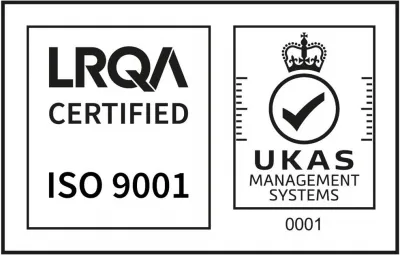
- © 2025 Nufox. All rights reserved |
- Terms & Conditions |
- Privacy Policy |
- Download ISO Certificate | Web Design MadeByShape
